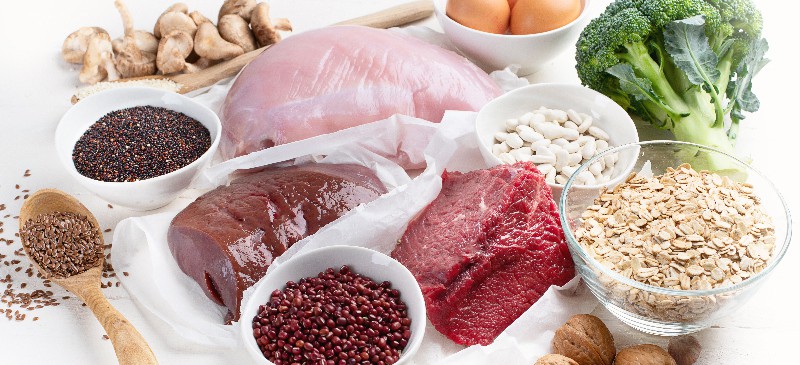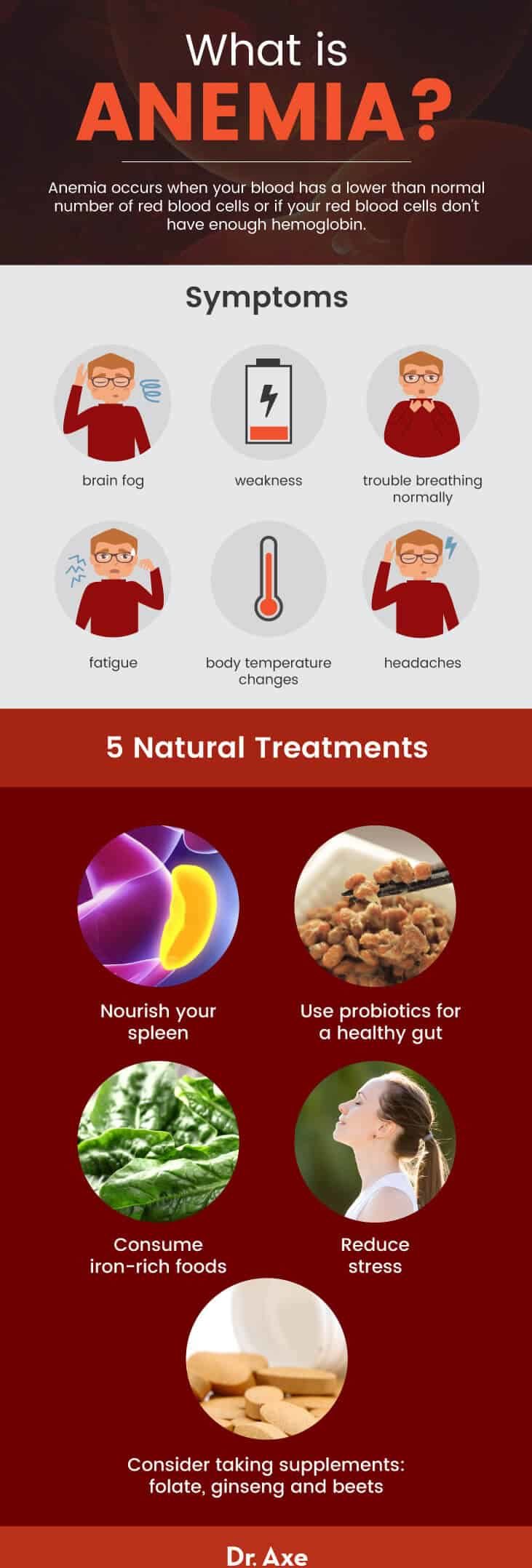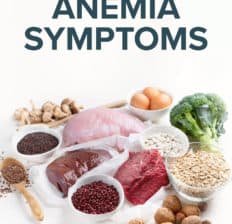This Dr. Axe content is medically reviewed or fact checked to ensure factually accurate information.
With strict editorial sourcing guidelines, we only link to academic research institutions, reputable media sites and, when research is available, medically peer-reviewed studies. Note that the numbers in parentheses (1, 2, etc.) are clickable links to these studies.
The information in our articles is NOT intended to replace a one-on-one relationship with a qualified health care professional and is not intended as medical advice.
This article is based on scientific evidence, written by experts and fact checked by our trained editorial staff. Note that the numbers in parentheses (1, 2, etc.) are clickable links to medically peer-reviewed studies.
Our team includes licensed nutritionists and dietitians, certified health education specialists, as well as certified strength and conditioning specialists, personal trainers and corrective exercise specialists. Our team aims to be not only thorough with its research, but also objective and unbiased.
The information in our articles is NOT intended to replace a one-on-one relationship with a qualified health care professional and is not intended as medical advice.
5 Natural Treatments for Anemia Symptoms
October 26, 2023

Anemia, also known as anaemia, occurs when your blood has a lower than normal number of red blood cells or if your red blood cells don’t have enough hemoglobin. Because a side effect of anemia is low circulation of oxygen, anemia symptoms usually include muscle weakness, ongoing fatigue or lethargy, brain fog, and sometimes mood changes.
Severe anemia or unabated anemia can also sometimes cause complications, including damage to your heart, brain and other organs, according to the National Heart, Lung, and Blood Institute (NHLBI). Although it’s rare, anemia that remains untreated can even become deadly.
Considering the seriousness of anemia and how common it is among certain age groups — especially women during reproductive years or adults with existing health conditions who are over 65 — it’s imperative that you learn how to recognize anemia symptoms in yourself or your loved ones. Below you’ll learn about the most common signs of anemia, as well as the best ways to treat these symptoms and reduce anemia risk factors, such as iron deficiency or eating a highly processed diet.
What Is Anemia?
Anemia is the condition marked by a deficiency of red blood cells or of hemoglobin in the blood. Hemoglobin is an iron-rich protein that gives your blood its red color. It helps cells bring oxygen from your lungs to the rest of your body.
If you have anemia, your body simply doesn’t receive enough oxygen-rich blood, leaving you tired and weak.
Red blood cells contain hemoglobin. They are also important for immunity, including fighting infections, as well as clotting blood and preventing too much bleeding.
Anemia is closely related to iron deficiency. According to the Centers for Disease Control and Prevention (CDC), iron deficiency is the most common nutritional deficiency in the world.
This is alarming considering the essential roles that iron plays, including facilitating oxygen distribution. Your body needs iron to perform many functions throughout every single day, but it’s common for many people to live with low iron levels due to factors like blood loss (such as from menstruation), a poor diet or an inability to absorb enough iron from food sources.
Symptoms
Without enough oxygen-carrying red blood cells in your body, it’s impossible to transport adequate amounts of oxygen to your brain, tissues, muscles and cells. Feeling a little “out of it” and tired is pretty common for many adults due to compounding reasons. These can include stress, lack of sleep, battling a virus and a busy work schedule, among others.
Therefore, when it comes to knowing whether or not you should be checked for anemia, it’s important to understand how anemia symptoms usually manifest and what makes them different than simply feeling exhausted due to other life circumstances.
Here are some of the most common anemia symptoms adults tend to experience:
- Fatigue
- Weakness
- Pale skin
- A fast or irregular heartbeat
- Shortness of breath, trouble breathing, low stamina and reduced endurance
- Chest pains
- Dizziness or loss of stability
- Cognitive problems, including brain fog, difficulty concentrating and trouble getting work done
- Cold hands and feet or other signs of body temperature changes
- Headaches
You should also be aware that, initially, anemia can be so mild that it often goes unnoticed for a period of time, sometimes even for years. But anemia symptoms typically worsen as the condition progresses, especially if more than one risk factor is contributing to the problem.
You can find out if you have low red blood cells by taking a hematocrit test, along with a hemoglobin test.

Causes and Risk Factors
There are three primary reasons why you might develop anemia from not having enough red blood cells:
- You’re not producing enough red blood cells.
- You’ve been losing too much blood due to injury, menstruation or other circumstances that cause bleeding.
- Your body is destroying the red blood cells you have due to changes in your immune system.
- Deficiency in iron or vitamin B12. This can happen if you don’t eat enough in general, you eat a restrictive diet or sometimes if you’re a vegetarian/vegan who avoids animal products (since these are good sources of iron and B vitamins). Your body needs adequate iron, vitamin 12, folate and other nutrients from the foods you eat in order to produce healthy amounts of hemoglobin and red blood cells.
- Being a woman, since women develop anemia more often than men do.
- In people who have pernicious anemia, they are getting enough vitamin B12 but aren’t able to properly metabolize or use it. Because of this, their bodies still can’t make enough hemoglobin.
- Older age. Research shows people over 65 are more likely to develop anemia.
- Pregnancy can also increase risk for anemia.
- Candida, which can alter how you absorb nutrients, including B vitamins.
- Other conditions, including an autoimmune disease (like lupus, for example), HIV/AIDS, rheumatoid arthritis, kidney disease or cancer can cause anemia. If you have kidney issues and anemia, your erythropoietin — a glycoprotein that controls red blood cell production — may be off. If your kidneys don’t produce enough of it, it can contribute to anemia.
- Having a digestive issue that disrupts nutrient absorption, such as inflammatory bowel disease, Crohn’s disease or an ulcer.
- Frequently taking over-the-counter pain relievers, especially aspirin, which block certain nutrients.
- Sometimes anemia is genetically inherited and therefore less likely to be due to lifestyle factors or your diet. These include aplastic anemia (your body doesn’t produce enough red blood cells), bone marrow diseases like leukemia and myelofibrosis, hemolytic anemia (red blood cells are destroyed faster than bone marrow can replace them), or sickle cell anemia (having a defective form of hemoglobin that produce red blood cells that can’t be used and causes blood cells to die prematurely). A genetic disorder called G6PD deficiency may also contribute to anemia.
- Thalassemia is another condition that can lead to anemia. This inherited blood disorder marked by fewer red blood cells and less hemoglobin in the body than normal, which can cause anemia.
How Diet Affects Anemia
Aside from getting enough iron and B vitamins (more on this below), what’s one of the most important things you can do to overcome anemia? Remove processed and junk foods from your diet as much as possible.
Consuming lots of empty calories — like processed and junk foods, such refined grains, fast food, synthetic ingredients or excess sugar, for example — can contribute to deficiencies in essential nutrients, fatigue, weight gain, weakness, and also inflammatory bowel disease (IBD) or candida.
Candida is a condition that results in high levels of yeast proliferating and disturbing the normal pH balance and mucous lining of the gastrointestinal tract. This causes changes how you absorb nutrients.
Oftentimes, digestive issues, like IBD or candida, and anemia are linked, especially in women. If you ever notice a white color on your tongue or in the back of your throat, or if you ever tend to get any sort of yeast issues, these are signs of candida symptoms.
Along with digestive issues and chronic fatigue, brain fog is often overlooked as a sign of candida and IBD. IBD or candida overgrowth can cause a lack of focus, poor physical coordination, difficulty in concentrating on tasks and poor memory, just like anemia can.
In order to overcome candida and related digestive issues, it’s usually very helpful to try eliminating almost all processed sugars and grains at least for a period of time. In other words, trying an “elimination diet” might greatly help control symptoms.
If you are eating a lot of sugary foods, pastas, breads, cereals or really any type of refined grain product or sweetener, they’re going to feed yeast in your GI tract. This can block iron absorption and worsen anemia, so addressing the quality of your diet is key for recovery.
I recommend replacing these problematic, low-nutrient foods with things like fresh veggies, lean protein and healthy fats. This will help restore digestive/gut health and also provide you essential nutrients, including iron.
Here Are the Worst Foods for Anemia to Avoid:
- Added sugar/sweeteners
- Processed grains
- Dark chocolate. Although chocolate is rich in iron, it also contains tannins, a type of antinutrient that interferes with iron absorption. Keep intake in moderation, include plenty of other iron-rich foods in your diet, and stick to milk and white chocolate varieties to minimize tannin intake.
- Bran. Bran is high in insoluble fiber that traps and removes iron during digestion.
- Conventional dairy. Calcium binds with iron in foods and can lead to poor absorption.
- Soda. Soda is high in sugar and poor in nutrients, and it blocks iron absorption.
- Coffee and black tea. Excessive coffee intake may block iron absorption, so reduce it to no more than one cup per day.
Natural Treatments
You can treat anemia symptoms naturally in the following ways:
1. Nourish Your Spleen
The first natural treatment for anemia is really nourishing your spleen. Your spleen is an organ that is responsible for red blood cell production, as well as keeping fluids together in your system. If your spleen isn’t healthy, that’s one of the first factors that’s going to cause anemia.
There are specific foods that will actually help nourish your spleen, helping you overcome anemia symptoms naturally. That first food group is squash, specifically pumpkin, acorn squash, butternut squash, spaghetti squash and those bright orange-colored foods. Think fall harvest!
Those sorts of foods are fantastic for nourishing the spleen. Aim for getting one to two servings of squash in your daily diet. If you want some ideas, try my Butternut Squash Soup as a starter.
The other food group that’s very important for nourishing your spleen and red blood cell production is green leafy vegetables, like nutrition-rich spinach, kale and chard. Having one serving of those per day, something like a Kale Caesar Salad or sautéed spinach, is also very nourishing to your spleen.
Last but not least, bitter foods are great for the spleen, specifically vegetables like romaine lettuce and arugula salad. You can even consume bitter herbs before a meal as a supplement, but anything that’s sort of a bitter food is very nourishing for the spleen.
2. Use Probiotics for a Healthy Gut
Step No. 2 to help you naturally overcome anemia symptoms is to boost gut health with probiotics. Gut health is crucial for absorption of nutrients.
The principle is not: “You are what you eat.” Rather, it is: “You are what you digest.”
If you’re not digesting properly and absorbing and assimilating nutrients properly, you’re not absorbing iron!
For a lot of people taking iron supplements, unfortunately they might not be working all that well. The reason is that their digestive system isn’t healthy.
They probably have a condition called leaky gut syndrome. Leaky gut doesn’t allow you to properly absorb iron as well as certain other vitamins and minerals, like vitamin B12, magnesium and zinc.
A medical study out of Stanford found that when somebody supplements with probiotics, all of that person’s B vitamin levels tend to go up, along with iron levels. So rather than simply popping an iron tablet without fixing the underlying problem, try to make changes that tackle the root problem of poor gut health.
I recommend you add in probiotic-rich foods to your diet, like real homemade yogurt, goat milk kefir and sauerkraut. Then taking a probiotic supplement, typically 50 billion to 100 billion IUs daily, can definitely help support your iron absorption.
3. Consume Iron-Rich Foods
The next step in helping you overcome anemia symptoms is consuming iron-rich foods. The richest sources of heme iron (the more absorbable form) in the diet include lean meat and seafood.
Dietary sources of non-heme iron include nuts, beans, vegetables and fortified grain products. In the United States, about half of dietary iron comes from bread, cereal and other grain products, but I recommend focusing on healthier options that are easier to digest instead.
Some of the best iron foods include beef liver and chicken liver.
Liver? It might sound gross to you, but if you buy organic chicken liver at your local farmers market or at your health food store, you can put it in a slow cooker with chicken in equal ratios, or about a third liver, two-thirds chicken. Include vegetables like carrots, celery, onions and sea salt.
This is the perfect meal to help replenish your liver, as it’s very high in iron.
For other iron-rich foods, look toward organic, grass-fed meats, like beef, bison and lamb. Also, eat spinach, kale and chard. Have a bison burger with a side of spinach, which is fantastic for helping you to reverse anemia.
4. Reduce Stress
If you’re emotionally stressed out and you struggle with forgiveness, anger, or have chronic worry and anxiety, those things really deplete your spleen and your liver and will exhaust those organs. So, really make sure that you are scheduling in times of relaxation and fun during your week. Plus, get plenty of sleep at night.
Those things will really help recharge your system and body and help you relieve stress. If you do those things, you’re going to see fantastic results in overcoming anemia.
5. Consider Taking Supplements
In addition to making the holistic changes described above, you can likely benefit from taking a B vitamin complex supplement that includes folate (not folic acid!), as well as an iron supplement, according to the NHLBI.
Another bonus tip related to stress and spleen health: In Chinese medicine, anemia is very closely related to the spleen, and certain herbs actually help support the spleen, especially ginseng.
Ginseng is known as an adaptogenic herb that lowers cortisol. It can help your body better deal with stress.
Lastly, benefit-rich beets also help with a healthy circulatory system and healthy iron levels.
Diet to Help Reduce Anemia
Even though anemia is so common, it’s possible for most healthy people without serious illnesses to prevent anemia by eating a healthy, unprocessed diet. Above you read about foods to avoid in order to manage anemia symptoms and also candida. Now here are some of the best foods to include in your diet in order to overcome anemia:
- Liver: Beef liver is very high in iron and vitamin B12 and a variety of other important minerals. If unable to consume cow liver, make sure you include grass-fed, organic beef as an alternative.
- Brewer’s yeast: High in folic acid, vitamin 12 and iron. Add to cereal, salad or juice.
- Foods high in vitamin C: Vitamin C helps with iron absorption. If you are eating a high-iron food (beef), try to include a source of vitamin C at that same meal, such as tomatoes, peppers or strawberries.
- Green leafy vegetables: These provide a significant amount of iron and folic acid. Raw spinach is high in oxalic acid, which can reduce iron absorption; however, steaming spinach will reduce this acid. Other green leafy vegetables to include are steamed kale and broccoli.
- Natural sweeteners (in small amounts): If you’re wondering what to do when you need to use some sort of sweetener but are avoiding added sugar, try blackstrap molasses or raw local honey in small amounts (about one tablespoon at most at a time). Blackstrap molasses can be taken in servings of about one spoonful daily, as it is very high in iron. Local honey or stevia are two other good options in terms of keeping too much sugar out of your diet but lightly sweetening foods.
Precautions
Although you might be able to treat anemia on your own by making changes to your diet, lifestyle and the supplements you take, it’s also a good idea to talk with your doctor if you suspect you have anemia, considering it can be a side effect of other serious illnesses. You might be exhausted and finding it hard to concentrate for other reasons that have nothing to do with anemia so don’t necessarily assume you’ve diagnosed yourself accurately.
If anemia symptoms persist after you’ve made the changes above, be sure to get tested for nutrient deficiencies, and get a doctor’s opinion.
Final Thoughts
- Anemia, aka anaemia, is a common condition that occurs when your blood has a lower than normal number of red blood cells or if your red blood cells don’t produce enough hemoglobin, according to the National Heart, Lung, and Blood Institute.
- Anemia caused by this hemoglobin deficiency lead to anemia symptoms that include brain fog, fatigue, weakness, trouble breathing normally, headaches and body temperature changes.
- Anemia treated through these natural means can help reduce anemia symptoms and address underlying causes: Nourish your spleen. Use probiotics for a healthy gut. Consume iron-rich foods. Reduce stress. Consider taking supplements, such as a B complex vitamin and iron.









